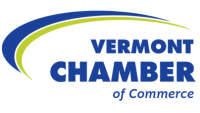Child Tax Credit and Military Income Exemption Outcome Uncertain
Tax relief for Vermonters was a top priority for Governor Scott this year, but the measures passed in H.510 did not meet the minimum requirements he outlined, suggesting an uncertain outcome. The bill largely focused on a child tax credit with a price tag of $31.7 million, which would provide an up to $1,000 annual payment to qualified families with children under the age of 5. Unfortunately, this tax credit is not aimed at addressing childcare affordability, a contributing factor to the workforce crisis, and would make funding a childcare system in future years ever more challenging. At issue with the Governor, however, is not the child tax credit specifically but rather his priority to significantly expand the earned income tax credit and provide a full exemption of pensions for military retirees.
Under H.510 only the first $10,000 of income of military retirees would be exempt until social security starts, at which point a military retiree would be required to pick one exemption, either social security or military pension. This modest exemption will get Vermont off the list of States that offer no exemption but does not go far enough to honor the service of military retirees or make Vermont an attractive option for the retention and recruitment of these retirees to start a second career here. These differences may ultimately be enough to gain the Governor’s support even though they don’t include all of his priorities.
SHARE THIS ARTICLE
RECENT NEWS


